LUXOR TEMPLE
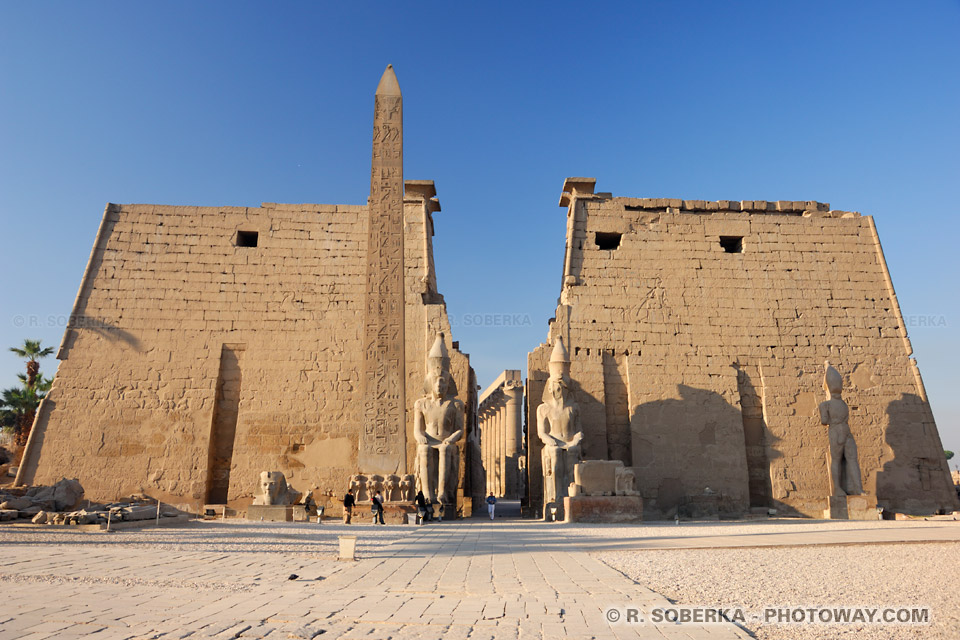
Welcome to the Nile Valley!
More specifically, to Luxor, the ancient city of Thebes, known for its famous Temple of Amun.
Also called the Luxor Temple, the entire site, along with nearby archaeological sites, was inscribed on the UNESCO World Heritage List in 1979.
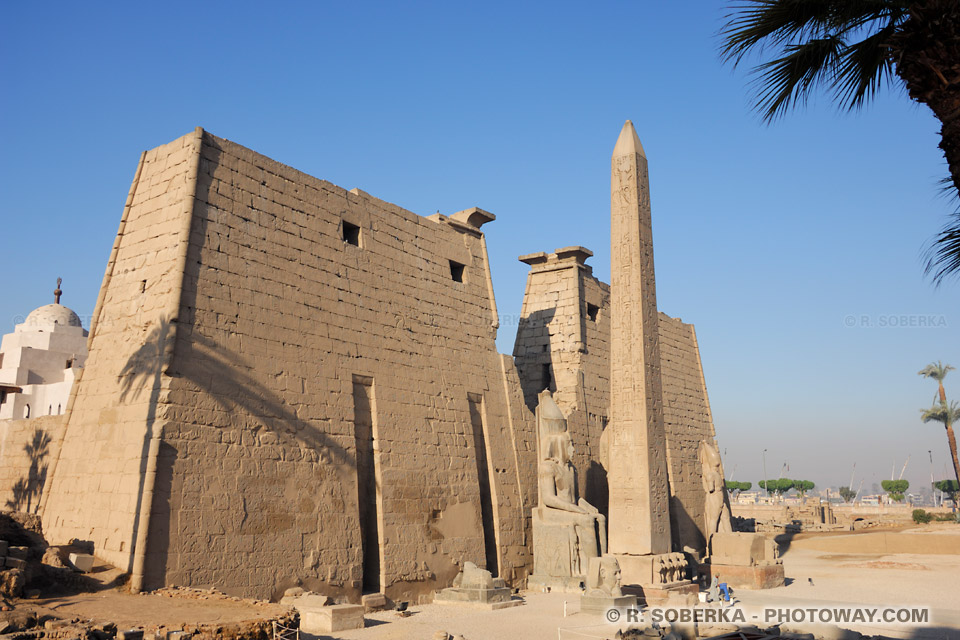
The pylon of the Luxor Temple was erected during the reign of Ramses II, around 1250 BCE.
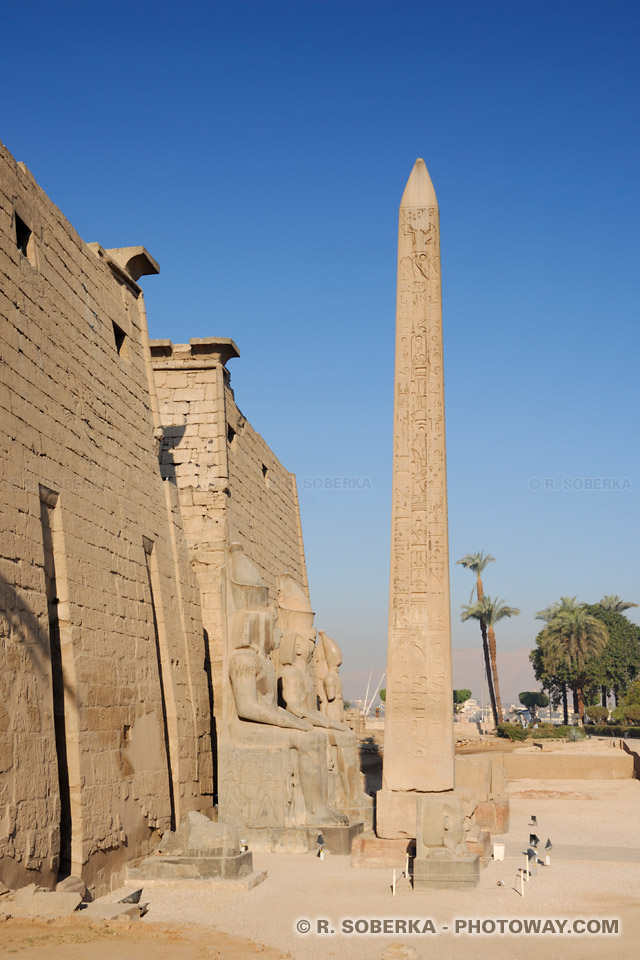
In front of the pylon, there are two colossal statues, each 49 feet (15 meters) tall, depicting Ramses II seated on his throne, with his hands resting on his knees.
In addition to these statues, there is also a pink granite obelisk.
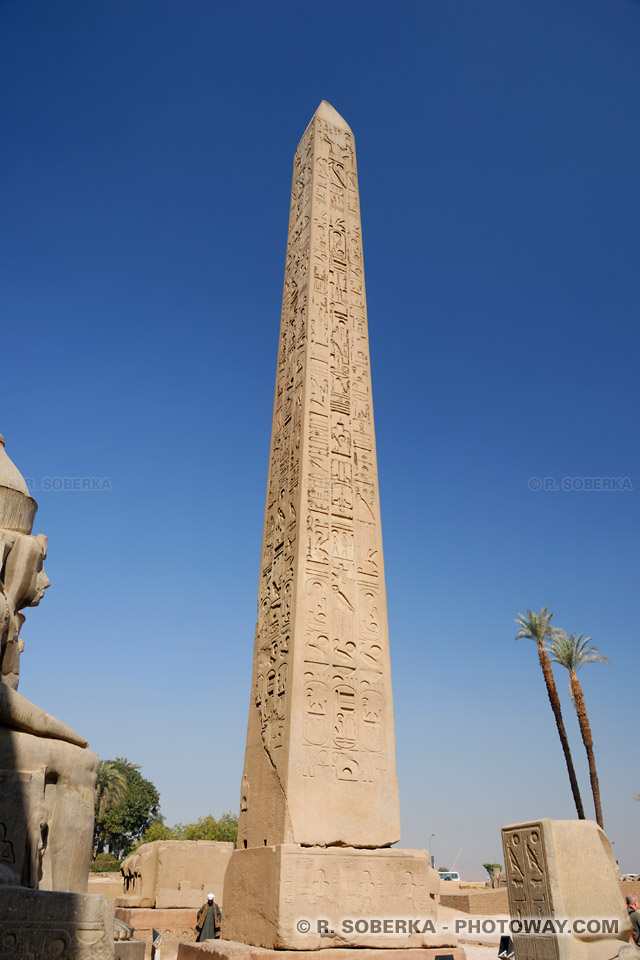
This magnificent obelisk stands no less than 75 feet (23 meters) tall and weighs approximately 250 US tons (227 metric tonnes)!
In the past, there was a second obelisk, but it was gifted to France in the early 19th century and now stands at Place de la Concorde in Paris!
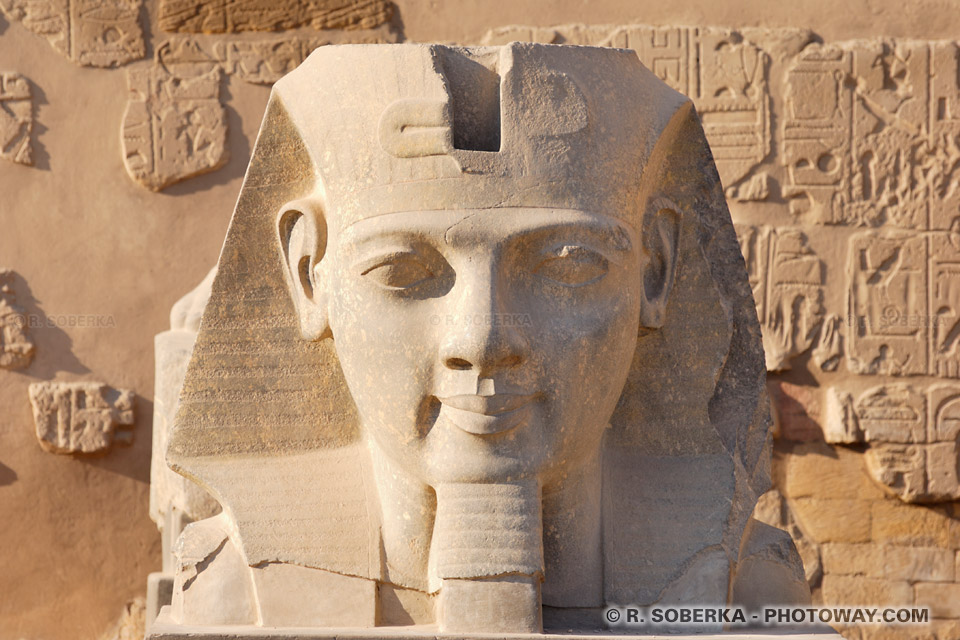
Near the obelisk and at the foot of the statues, there is a head of Ramses II from a collapsed statue.
Notice the preservation of this multi-ton head, as well as the symmetry of the face and the quality of the statue's polishing, knowing it was sculpted over 3,300 years ago!
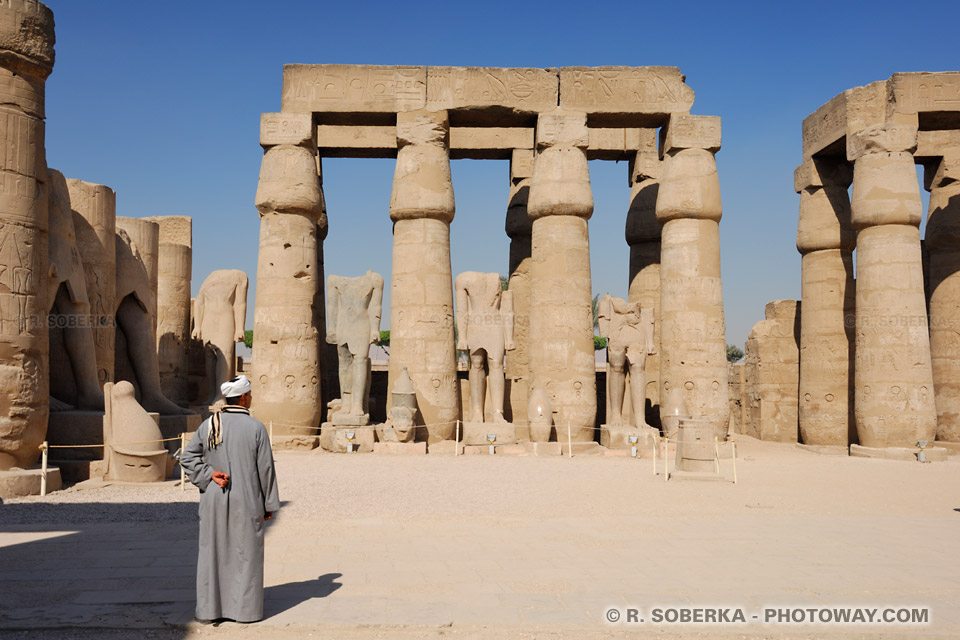
Let us pass through the pylon and enter the Luxor Temple...
The inner courtyard features massive papyrus-shaped columns adorned with detailed carvings.
It served as a ceremonial space, showcasing the grandeur of Ramses II and honoring the god Amun.
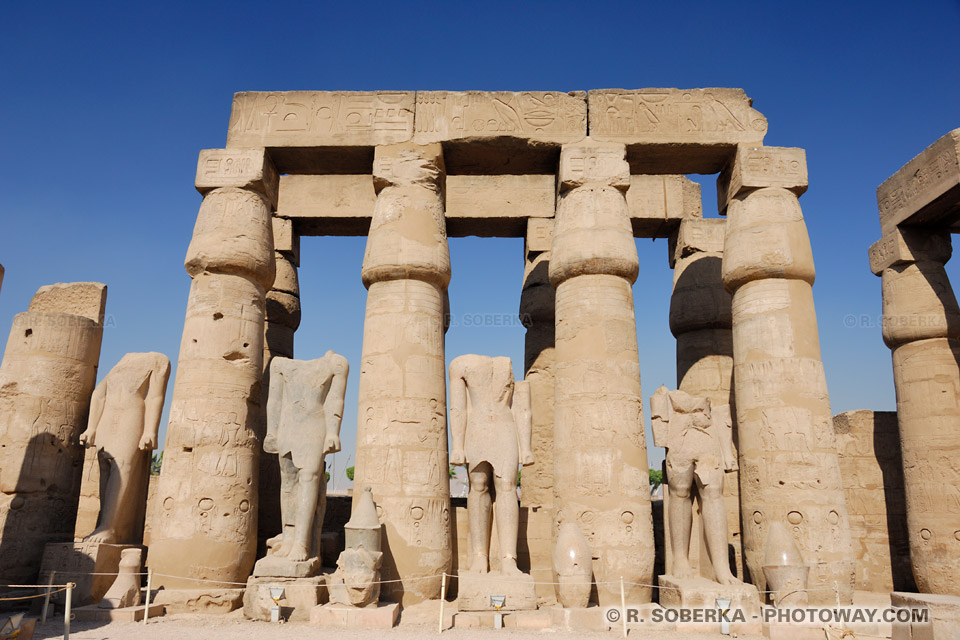
Between the columns, there are numerous statues glorifying Ramses II, although many are damaged.
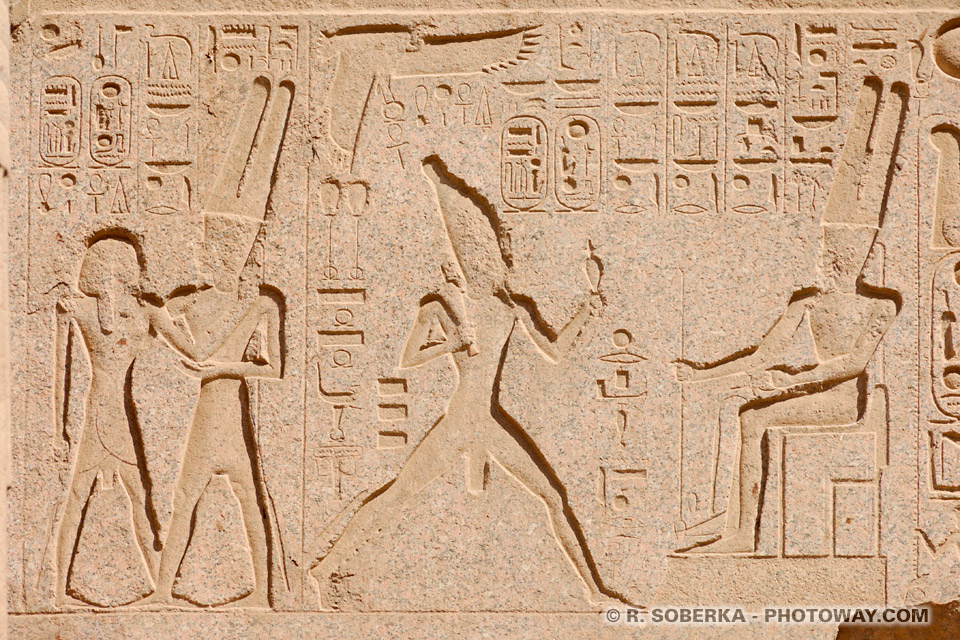
Noteworthy: many bas-reliefs and hieroglyphs that have withstood the test of time.
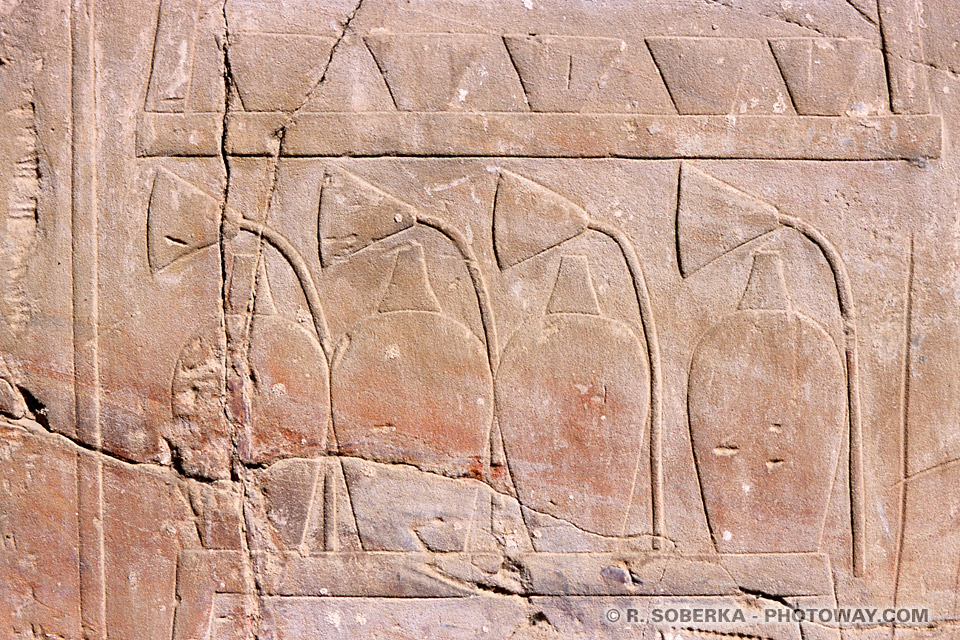
Some bas-reliefs defy imagination, like these... uh... "fire extinguishers"!?
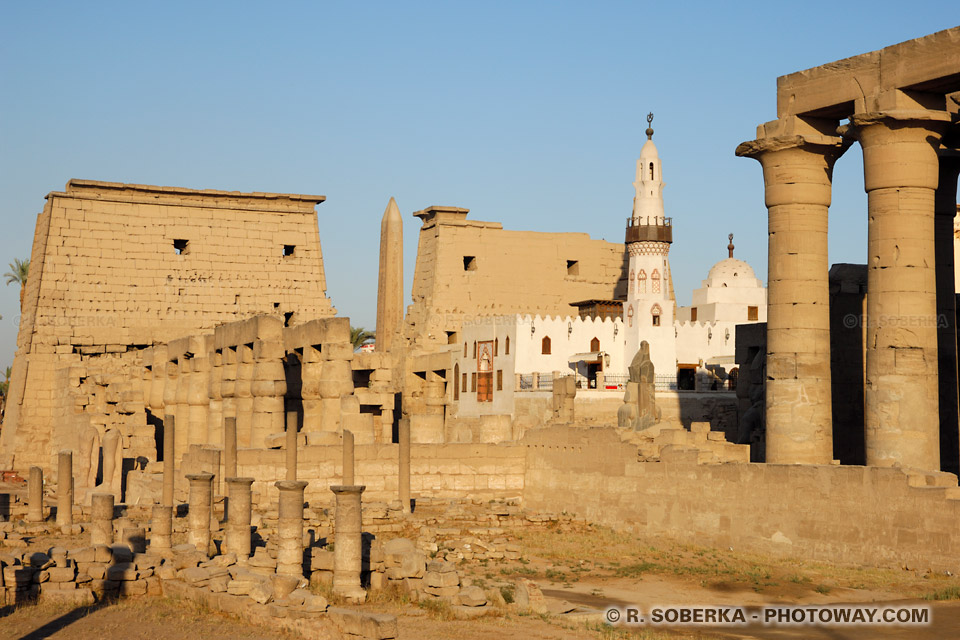
Strangely, there is also a mosque inside the Luxor Temple.
Overlooking the Great Court of Ramses II, the Abu al-Haggag Mosque was built in the 12th century.
Perched atop ancient ruins, it blends Islamic and Pharaonic history, reflecting the diversity of Egypt's cultural heritage.
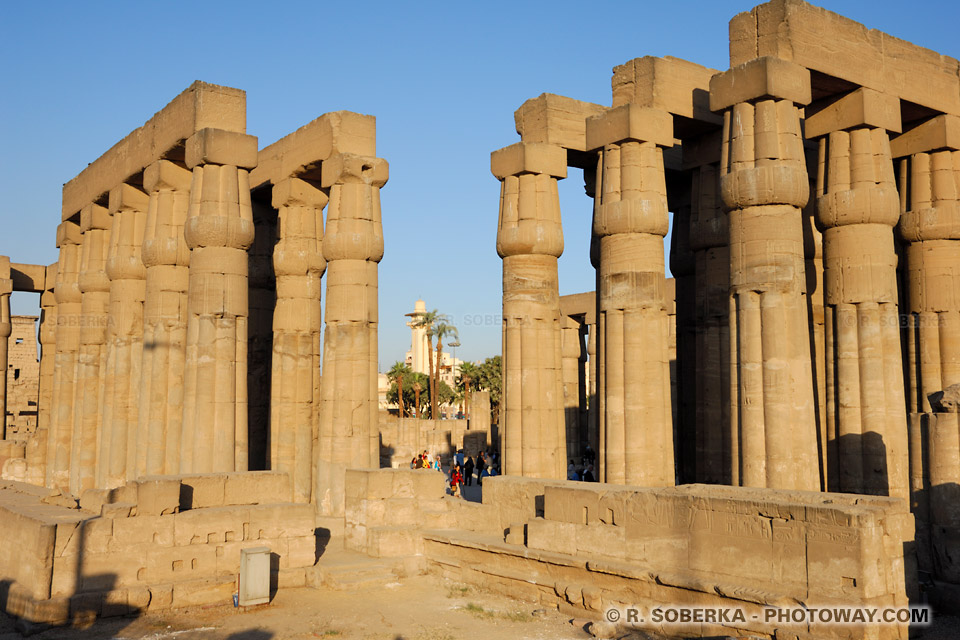
Further into the temple, the court of Amenhotep III is surrounded by a veritable forest of towering columns.
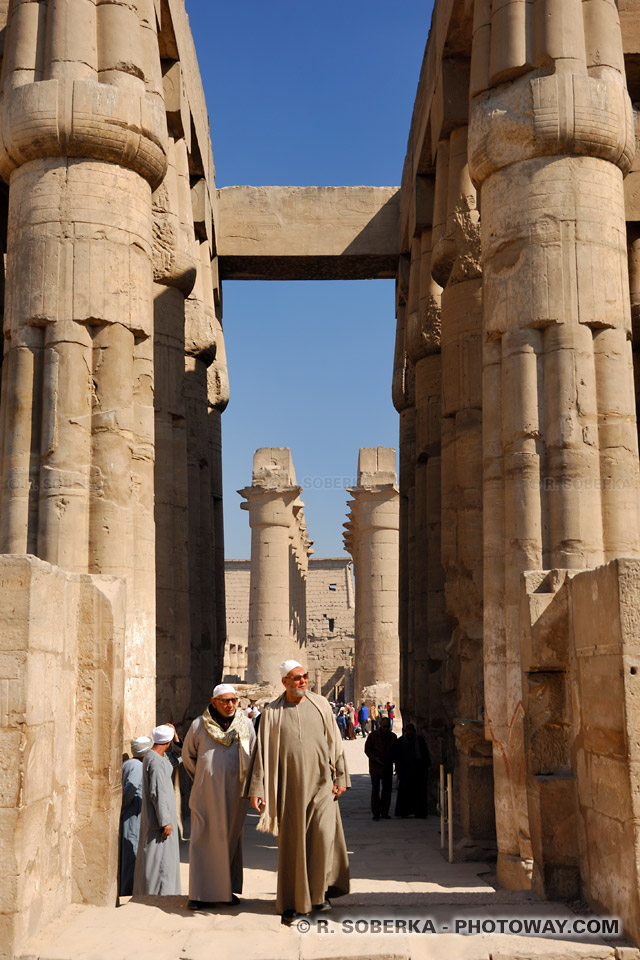
Visiting the Luxor Temple for one to two hours is a particularly enjoyable experience, allowing you to fully immerse yourself in the site, especially for history enthusiasts or photographers like me!
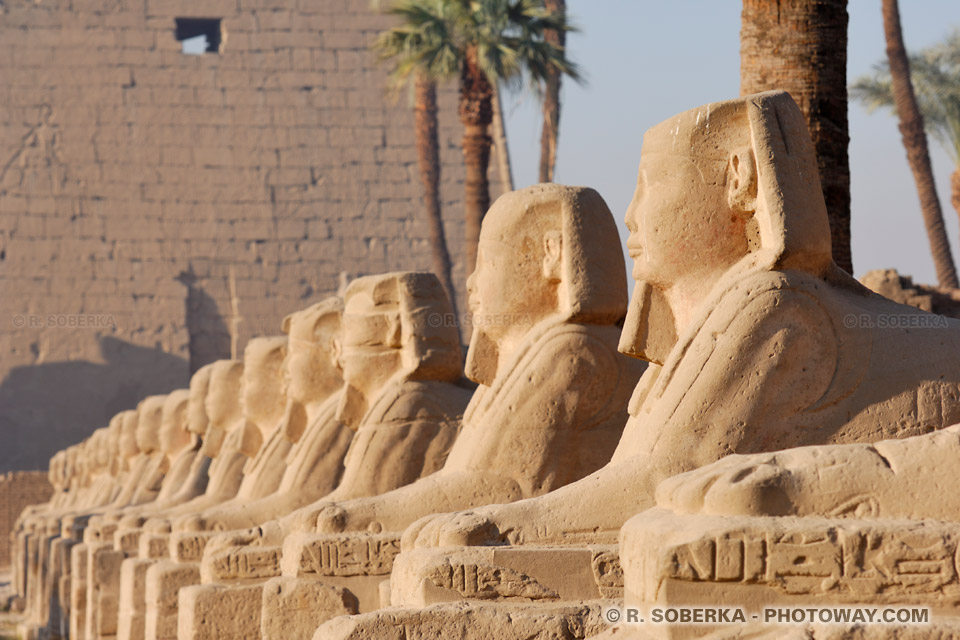
Let us exit... In front of the pylon of the Luxor Temple begins the Avenue of Sphinxes.
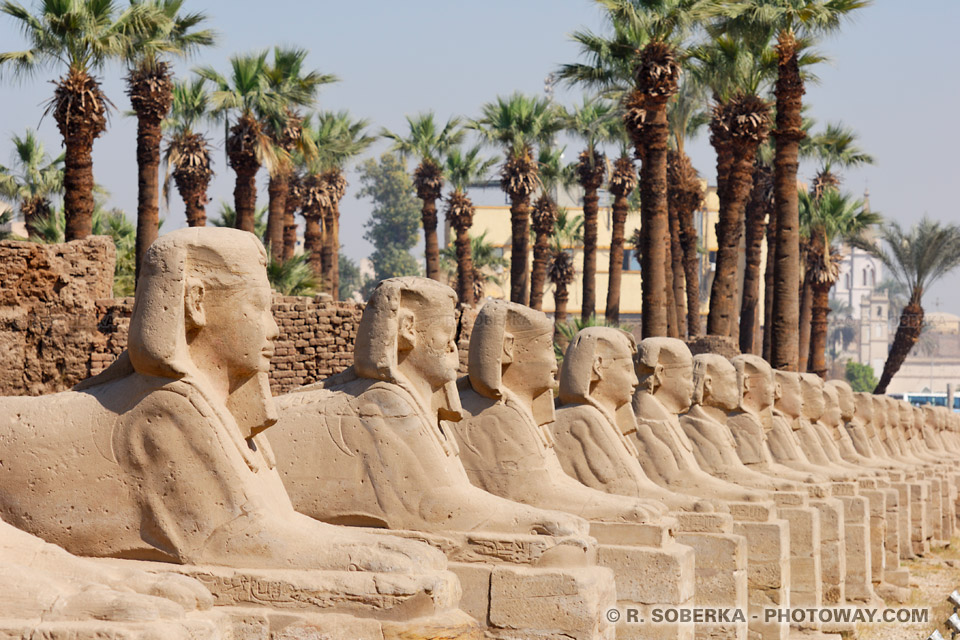
Also called the "dromos" (from Greek), the Royal Processional Way, or the Avenue of Rams, this 1.7-mile (2.7-kilometer) avenue...
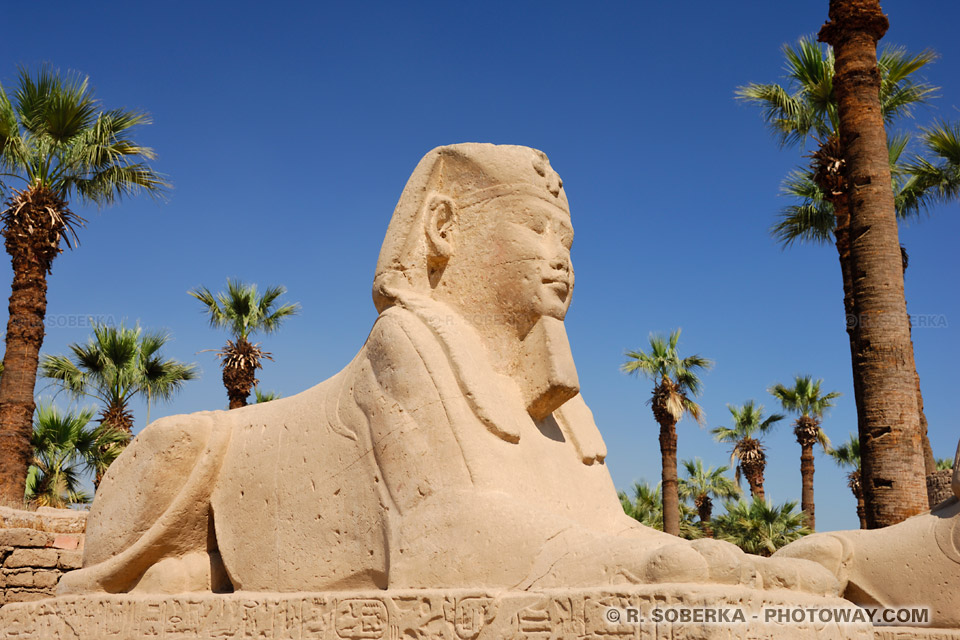
Originally, the sphinx statues had ram heads.
However, in 400 BCE, Pharaoh Nectanebo I reshaped some of them, replacing the original heads with statues in his likeness!

Thus, along much of the avenue, you will see only the faces of Pharaoh Nectanebo I.
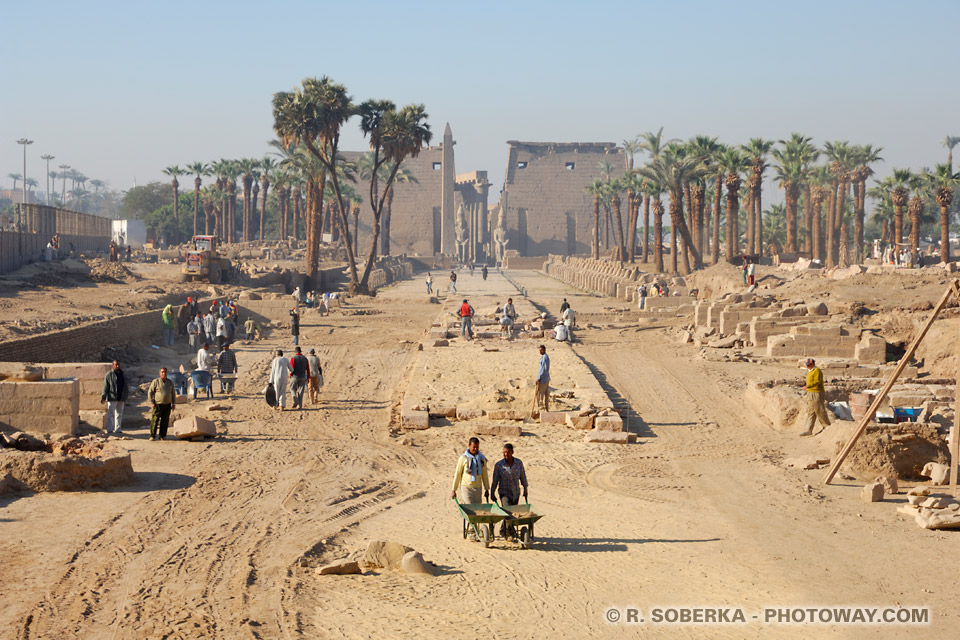
During my visit to Egypt, significant restoration work was underway on the Avenue of Sphinxes.
This avenue, or "dromos," as mentioned, is 1.7 miles (2.7 kilometers) long and ends on the other side with the famous...
All photos of Luxor Temple © 2002 and 2010 by Richard Soberka